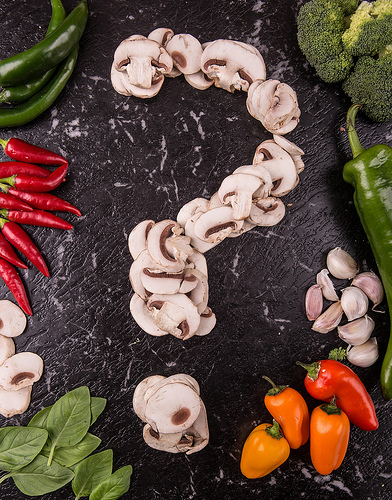I’m not a trained chef, I didn’t grow up making meals for my family and I’m not a “natural.”
When I made the choice to eat healthier, I had to make a commitment to learn my way around the kitchen, not to mention the grocery store (that’s a whole different ball game).
It was tough, but it doesn’t have to be that way!
In 2011, when I decided to go from microwaved meals to home-cooked, I faced some big learning curves.
Some were self-imposed, while others were from lack of food knowledge. With time and patience, I’ve learned the basic skills necessary to cook healthy meals for myself and others.
Over the past few years, I’ve created “rules” for the journey from microwaved to home-cooked:
Your kitchen, your rules
Cooking utensils go to the left of the stove, use this knife for veggies—forget the rules!
We’re not competing for head chef at Gordon Ramsey’s new restaurant, we’re cooking in the comfort of our own kitchen. So, do you!
If you love cutting with a specific knife and only that knife, then use it! Only have mismatching pots and lids? Who cares! There are no rules in the kitchen you have to follow that you don’t set for yourself!
Create your own system and environment by putting dishes and utensils where you want them and only use the ones that you’re comfortable using (safely, of course).
Be okay with imperfection
Stop worrying about not being “good enough” to cook! What does it mean to simmer? How do you know when pasta is done? I can’t use a knife!
There are TONS of great resources online, like YouTube, that can teach you the basics. When you learn what it means to simmer, try it out! And once you learn your way with a knife, start chopping! It doesn’t matter if your onion pieces are chopped different shapes and sizes, they’ll still taste great. So what if you’re potatoes aren’t peeled perfectly?
The point is that with time and practice you’ll be a whiz in the kitchen. If you’re a newbie cook, remember that everyone has to start at the beginning—you’ll get the hang of it. Just enjoy what you’re doing, be patient and give it time.
Have an open mind
As a new cook, it’s important to experiment!
Try vegetables again (sometimes twice again) that are on your “I don’t like…” list. Over time, our taste buds change, especially as we adapt new eating habits, it’s like developing a whole new sense of taste! Even if you didn’t use to like carrots, try them again and then try them again, at least twice before crossing it off your list once more. If you don’t like it the first time you retry it, cook it differently the next time.
Some of my favorite vegetables today used to be my most disliked foods (like, sweet potatoes!!).
Eat the rainbow, especially your greens
So you’ve got the basic skills down, now what do you cook?
There are so many great cookbooks, blogs and websites with simple, healthy recipes, but always remember to eat fruits and veggies of all colors—with an emphasis on the leafy greens.
Eating variety means you’re giving your body the best chance of getting all the vitamins and nutrients it needs. Plus, greens are high in calcium, magnesium, iron, potassium, phosphorous, zinc, and vitamins A, C, E, and K. They’re also loaded with fiber, folic acid, chlorophyll, and other micronutrients and phytochemicals.
No more excuses! Get in the kitchen and start your journey to healthier eating. Make cooking a fun, exciting and delicious experience. Just get cookin’!
Love elephant and want to go steady?
Sign up for our (curated) daily and weekly newsletters!
Apprentice Editor: Lauryn DeGrado/Editor: Catherine Monkman
Photo: Nina Mathews/Flickr












Read 0 comments and reply